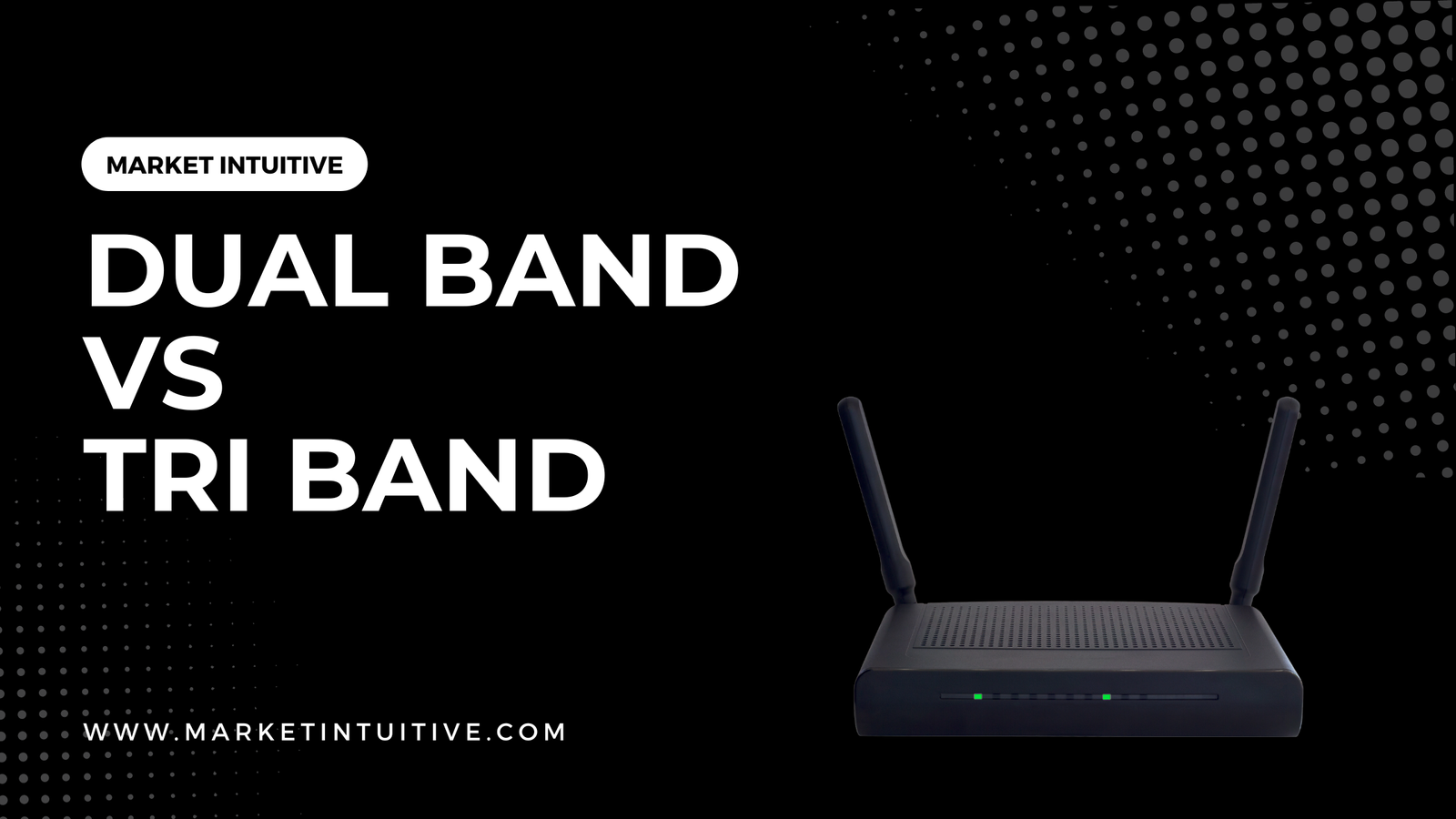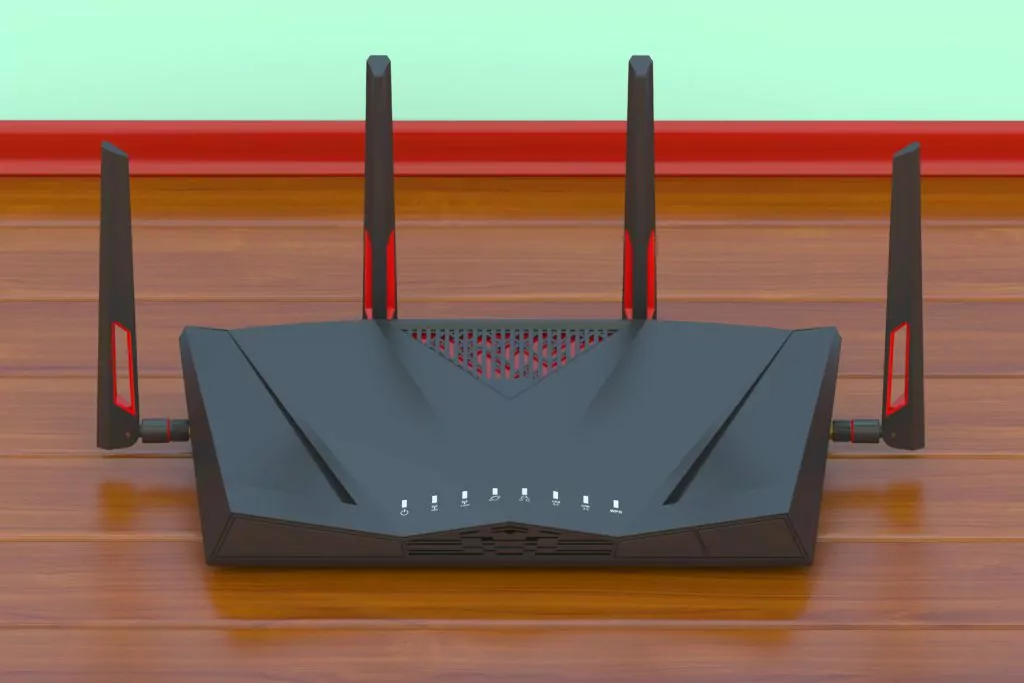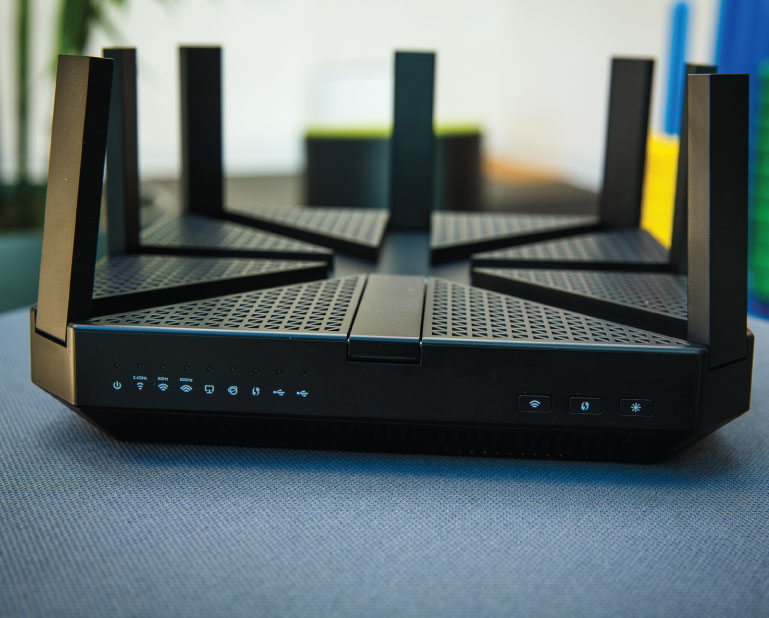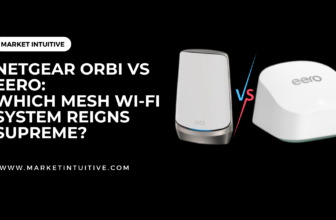Dual Band vs Tri Band: Which One Is Better For You? [2023]

In today’s world of increasing internet usage and expanding Wi-Fi networks, the debate between dual band vs tri band routers has become increasingly relevant. It is essential to understand the differences and benefits of each type to make an informed decision that best suits your needs.
Dual-band routers support both the 2.4GHz and 5GHz frequency bands, offering more bandwidth and backward compatibility. These routers typically provide a reliable connection for a fair amount of connected devices without suffering from network congestion. On the other hand, tri-band routers come with an extra 5GHz band, essentially hosting three different Wi-Fi networks at once. This feature allows for even more simultaneous connections and better performance, especially in environments with heavy network usage.
In this article, I will compare Dual Band vs Tri Band, including benefits, speed, performance, suitability, and more so you can make a more informed decision to enhance your Wi-Fi experience.
| Criteria | Dual-Band Routers | Tri-Band Routers |
|---|---|---|
| Frequency Bands | 2 (2.4GHz and 5GHz) | 3 (one 2.4GHz and two 5GHz) |
| WiFi Speed | Up to 1.9 Gbps | Up to 5.3 Gbps |
| Devices Supported | Ideal for smaller networks | Ideal for larger networks |
| Interference Management | Moderate | Superior |
| Price | Generally cheaper | Generally more expensive |
| Release Year | 2009 | 2014 |
Dual Band Routers
Dual band routers are designed to support both the 2.4GHz and 5GHz frequency bands. This means that they can accommodate multiple devices in your network without congestion, giving you a smoother Wi-Fi experience. This section will explore the pros and cons of dual band routers and provide details on their best use cases.

Top Use Cases
- Small Spaces: If you have a limited Wi-Fi coverage area, like a small apartment or house, a dual band router is a perfect choice. The combination of 2.4GHz and 5GHz bands provides enough coverage for your devices without the need for additional bands.
- Mixed Devices: Dual band routers are ideal if you have older devices that only support 2.4GHz and newer devices that utilize 5GHz. The router will automatically switch between the two bands depending on the device’s compatibility, ensuring that all devices get the best possible connection.
- Streaming and Gaming: Though not as powerful as tri-band routers, dual band routers still offer decent bandwidth for streaming and gaming activities. If you’re not connecting an excessive number of devices or require ultra-fast speeds, a dual band router can serve your needs well.
What exactly are the 2.4GHz and 5GHz frequencies?
The 2.4GHz frequency range is known for its fast speed and ability to cover a wide area. It supports various technologies, including mobile devices, Bluetooth, and smart home appliances. However, the large number of users connected to the 2.4GHz band eventually became crowded and experienced decreased speeds.
This is where the 5GHz frequency comes into play. The 5GHz frequency offers even faster speeds and provides a more stable connection for all devices. The only drawback is that it doesn’t have the same wide coverage as the 2.4GHz band. Consequently, having a router that solely supports the 5GHz frequency was undesirable.
To address this issue, dual-band routers were introduced, allowing the coexistence of both the 2.4GHz and 5GHz frequencies. When new devices connect to your Wi-Fi network, they automatically connect to the faster 5GHz frequency. However, older devices or devices located far from the router will connect to the 2.4GHz band to ensure a reliable connection.

With this information about dual band routers, you can make a more informed decision as to whether this type of router is the right fit for your specific needs and network requirements.
Tri-Band Routers
Tri-band routers are an upgrade of dual-band routers, offering an additional 5GHz band to support more devices and improve network performance. They operate simultaneously on the 2.4GHz band and two 5GHz bands.

Top Use Cases
- Large households and offices: If you have many devices connected to your network, a tri-band router can help alleviate network congestion and improve performance for everyone.
- Gaming and streaming: A tri-band router ensures a more stable and faster connection for gaming and streaming, as the extra 5GHz band reduces network bottlenecks.
- Shared Wi-Fi environments: In situations where multiple users are sharing Wi-Fi (such as apartment buildings or hotels), a tri-band router’s additional band helps maintain performance, even with many users connected simultaneously.
What is the purpose of the extra 5GHz band?
By incorporating a tri-band router, an extra frequency band is introduced, including a second 5GHz band. This can be like adding a traffic lane to expand a highway. Including a dual 5GHz band enables extremely fast connection speeds and allows more devices to connect to your network. Tri-band routers often use technology to manage network traffic efficiently, directing different activities to separate lanes to maintain optimal speeds and stable connections.
This feature is particularly beneficial for households with multiple individuals engaging in gaming or streaming large amounts of content, as a tri-band router can effectively handle simultaneous high-bandwidth activities.
In summary, tri-band routers excel in handling multiple devices and providing a faster and more stable connection for high-bandwidth activities. However, they come with a higher price tag and may be excessive for those with only a few devices or who don’t engage in network-heavy activities.
Dual Band vs Tri Band
When deciding between dual band vs tri band routers, there are a few key factors you should consider.
Performance Comparison
Dual-band routers support both the 2.4GHz and 5GHz frequency bands. This means they can handle multiple devices connected to the internet at the same time, providing a stable internet connection for your home.
Tri-band routers, on the other hand, offer an extra 5GHz band in addition to the 2.4GHz and 5GHz bands. This might result in faster speeds if you have a particularly large number of simultaneous connections or if you experience a lot of congestion on your network.
Throughput Capacity
The network throughput is determined by the rate at which data is transferred across communication channels within a network, such as packet radio or Ethernet. Therefore, as data transfer speeds increase, the overall throughput improves.
With the addition of an extra 5GHz frequency band, a tri-band router offers more channels than a dual-band router, resulting in enhanced throughput. Using a tri-band router allows you to engage in bandwidth-intensive activities like online gaming and streaming 4K video with reduced latency compared to using a dual-band WiFi setup. This means you can enjoy these activities with fewer interruptions and delays.
Suitability
A dual-band router is appropriate for a home with a limited number of devices and where high-speed requirements are not necessary since there are no bandwidth-intensive tasks like live streaming or cloud gaming.
However, when engaging in network-heavy activities without experiencing significant delays, a tri-band router becomes essential. Using a tri-band router, you can carry out bandwidth-intensive tasks on your devices with minimal or no lag. This makes it ideal for activities that demand many network resources, ensuring a smoother and uninterrupted experience.
Price Comparison
Dual-band routers tend to be more affordable than tri-band routers. While prices will vary based on different factors such as brand, performance, and features, you can generally expect to save some money by opting for a dual-band router.
Dual Band vs Tri Band: Which One to Choose?
In most cases, a dual-band router will be more than sufficient for your needs, especially if you don’t have a particularly large number of devices connected to your network. However, if you have many devices or heavy internet usage, a tri-band router might be worth considering. Evaluate your specific needs, such as the size of your network and the number of devices, and weigh that against the price difference between dual-band and tri-band routers, to choose the best option for you.
Recap – Dual Band vs Tri Band Routers
When deciding between dual band vs tri band routers, it’s important to understand the key differences to make the best choice for your needs. Dual-band routers provide two frequency bands: 2.4GHz and 5GHz. They are usually more affordable and are suitable for smaller spaces like residential houses or apartment units.
On the other hand, tri-band routers offer one 2.4GHz channel and two 5GHz channels. These routers are suited for larger spaces like office buildings, apartment blocks, or hotels. They can handle more devices connected to the network without suffering from network congestion.
Here’s a quick comparison of the pros and cons of dual band vs tri band router:
Dual-Band Routers Pros & Cons:
Tri-Band Routers Pros & Cons:
Dual-band routers should suffice for most home users, but a tri-band router might be a more suitable choice if you have a larger area or a higher number of connected devices.
Conclusion
When considering which router to buy – dual band vs tri band, think about your specific needs, the size of your space, and the number of devices that will be connected.
If your primary focus is on simplicity, speed, and reliability, then a dual-band setup should meet your needs adequately. However, if you desire both high speed and greater flexibility in your network setup, opting for a tri-band configuration is preferable. Which do you find the best? Let me know your views and thoughts in the comments below.
FAQs
Is Tri-Band superior to Dual-Band?
When it comes to speed, performance, and consistency, a tri-band router surpasses a dual-band router. However, one significant drawback of the latter is that it is incompatible with many devices, which can be a disadvantage.
Why do I need Tri-Band WiFi?
The necessity for tri-band WiFi depends on various factors. If you possess a device that supports tri-band connectivity and desire more speed and throughput, you will benefit from tri-band WiFi.
Why is 5GHz faster than 2.4GHz?
The 2.4GHz frequency band has a more extended range but slower speeds, while the 5GHz band provides faster speeds over a shorter range. Therefore, the choice between the two depends on how you intend to utilize your WiFi connection.
Why do WiFi bands matter?
The bands in WiFi determine how wireless data is transmitted between devices. Currently, most routers utilize the 2.4GHz and 5GHz bands, while the 6GHz band is present in only a few routers. Higher frequency bands offer incredible speeds but provide less coverage.

![Dual Band vs Tri Band: Which One Is Better For You? [2023]](https://marketintuitive.com/wp-content/uploads/thumbs_dir/Black-White-Elegant-Phone-Review-Blog-Banner-3-1-q0cu0o4951qq2lkxxjua4jek7c2jjnkfv6os7nvi2k.jpg)
![Dual Band vs Tri Band: Which One Is Better For You? [2023]](https://marketintuitive.com/wp-content/uploads/thumbs_dir/85-q0cia0yq5t6bqlhsvd09how8j983j2pc3ao4xoj5to.jpg)



